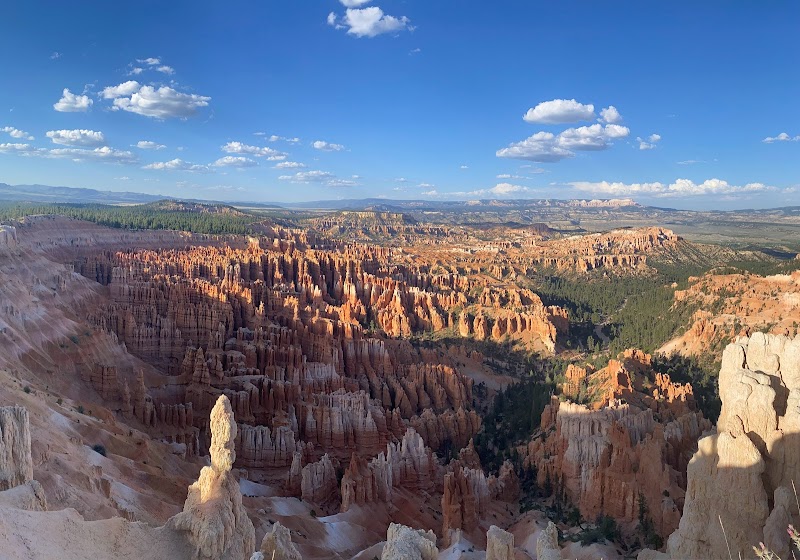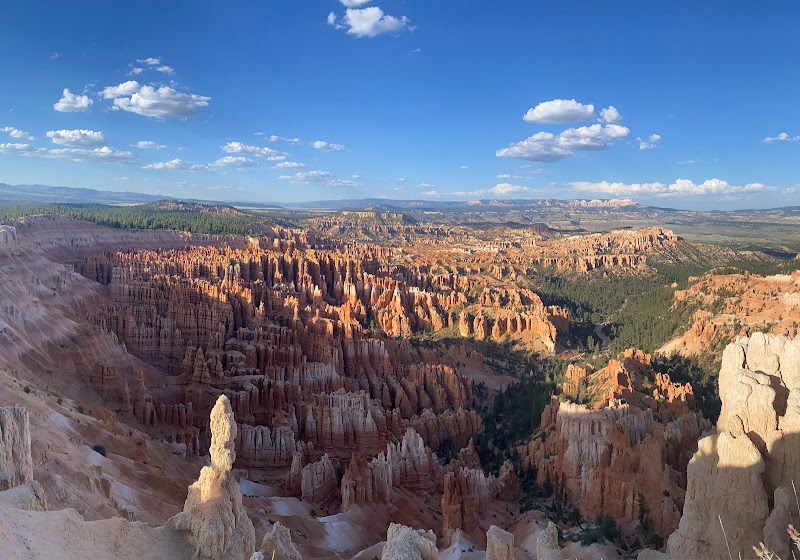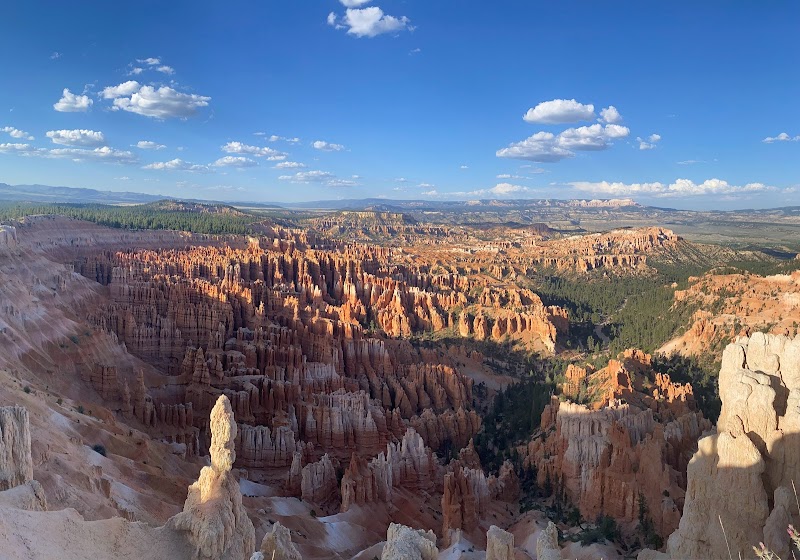Have you ever heard that Bryce Canyon National Park isn't actually a canyon, but a collection of natural amphitheaters? This Utah jewel hosts some of the most unique and stunning geological formations on Earth, including the famed Hoodoos and the expansive Bryce Amphitheater. Each year, millions of visitors are captivated by the park's bewildering array of colors, shapes, and vistas, each one more awe-inspiring than the last.
However, to truly immerse yourself in the magic of Bryce Canyon, you'll need a guide—that's where the Grand Canyon tourist map becomes invaluable. Equipped with a comprehensive map, you'll be able to navigate your way through the park's labyrinthine trails and breathtaking overlooks, ensuring you don't miss a single captivating sight of Bryce Canyon's unearthly beauty. So, strap in and get ready for the adventure of a lifetime!
Booking.comUnearth the Hidden Gems of Bryce Canyon National Park
Though Bryce Canyon National Park is widely recognized for its iconic hoodoos and natural amphitheaters, the park offers so much more beyond the familiar tourist trails. This distinctive land of red rock harbors many secrets waiting to be unveiled. Let's delve into some of the lesser-known, but equally breathtaking attractions in this geological paradise.
Dive into the Wilderness with the Under-the-Rim Trail
Delve deeper into Bryce Canyon's wilderness with the often overlooked Under-the-Rim Trail, a route that leads you through the heart of the park, far from the crowded overlooks. This 23-mile long trail offers an intimate encounter with the park's unique geology and an opportunity to spot wildlife in their natural habitat. For those seeking an authentic experience, this trail is an ideal choice. Don't forget to check out the Zion National Park tourist map for a comprehensive view of the trail and its surroundings.
Discover the Magic of Mossy Cave
Escape the desert heat and immerse yourself in the cool, serene world of Mossy Cave. Tucked away off the beaten path, this hidden treasure offers a rejuvenating waterfall and a lush, green landscape that beautifully contrasts with the arid surroundings. While not a traditional cave, Mossy Cave is a fascinating geological formation shaped by an ancient river, offering a glimpse into the park's diverse ecosystem.
Travel Back in Time at the Pioneer Village
If you're a history aficionado, make sure to visit the Pioneer Village. This historical site pays tribute to the early settlers of the region and provides a fascinating insight into their daily life. With original cabins, a blacksmith shop, and an old schoolhouse, this village serves as a living testament to the resilience of the pioneers who braved this rugged landscape. It's an experience that beautifully blends the natural and cultural history of Bryce Canyon.
Bask in the Beauty of the Natural Bridge
While Bryce Canyon is famous for its hoodoos, there's another geological marvel that often remains unnoticed - the Natural Bridge. This splendid arch, sculpted by time and erosion, stands as a testament to nature's artistic prowess. The Natural Bridge is a perfect spot for photography enthusiasts, offering a stunning backdrop of the canyon and the forest beyond.
Explore the Stellar Wonders at the Dark Sky Park
After sunset, Bryce Canyon transforms into a celestial haven, honored as an International Dark Sky Park. Relax under the night sky, and you'll be mesmerized by the sheer number of stars visible in the clear, unpolluted sky. It's a surreal experience that allows you to connect with the cosmos in a profound way, reminding us of our place in the grand design of the universe.
Whether it's venturing off the beaten path, delving into the region's history, or stargazing, Bryce Canyon National Park offers an array of unique experiences that go beyond its iconic geological formations. So, step out of your comfort zone and unearth the hidden wonders of this extraordinary landscape.

Key Information for Your Visit to Bryce Canyon National Park
Transportation and Mobility
Getting around Bryce Canyon National Park requires some planning. While personal vehicles are permitted, parking can often be limited, particularly during peak times. The park offers a free shuttle service that runs regularly from April through October, providing access to the park's main viewpoints and trailheads. If you wish to explore further, bicycles are allowed on all main park roads and on the shared use path from Bryce Canyon City to Inspiration Point. You might also find the Canyonlands National Park tourist map useful if you plan to head there next.
Schedules and Prices
Bryce Canyon National Park is accessible 24 hours a day, all year round. However, certain services and facilities may reduce their hours or close entirely during the winter months. The entrance fee is $35 per vehicle, which includes all passengers and is valid for seven days. For frequent visitors, an annual pass can be bought for $70. Remember to check the official park website for the most up-to-date information.
Safety Tips
As with any national park, it's crucial to prioritize safety during your visit. Always stick to designated trails and avoid approaching wildlife. Although the park is generally safe, accidents can occur, particularly near cliffs and other steep areas. Stay alert to the weather conditions, as sudden storms can render trails slippery and perilous.
Practical Recommendations
The optimal times to visit Bryce Canyon National Park are late spring and early fall when the weather is temperate and the crowds are smaller. However, for those courageous enough to brave the cold, winter offers a unique perspective, with snow-capped hoodoos creating a striking contrast against the red rock. Always pack plenty of water and wear sun protection, irrespective of the season. And don't forget your camera - the park's breathtaking scenery is something you'll want to capture.

Frequently Asked Questions
1. What is the best time of year to visit Bryce Canyon National Park?
The best time to visit Bryce Canyon National Park largely depends on your trip objectives. For mild weather and fewer crowds, consider visiting in the spring (April to June) or fall (September to October). During these periods, daytime temperatures are comfortable and the park is less crowded than in the peak summer months. However, if you're interested in winter activities such as snowshoeing or cross-country skiing, you might prefer to visit in the winter.
2. Are there any special events or festivals at Bryce Canyon National Park?
Bryce Canyon National Park hosts a variety of special events and programs throughout the year. One such example is the annual Astronomy Festival, which takes place in the summer and includes telescope viewing, presentations, and stargazing activities to celebrate the park's designation as an International Dark Sky Park. The park's official website always has the most current information on upcoming events.
3. Can I bring my pet to Bryce Canyon National Park?
Pets are allowed in the park, but there are restrictions to ensure the safety of both your pet and the park's wildlife. Dogs must be kept on a leash no longer than six feet at all times and are only allowed on paved surfaces such as campgrounds, picnic areas, and parking lots. They are not allowed on park trails or in the backcountry.
4. What type of wildlife can I expect to see at Bryce Canyon National Park?
Bryce Canyon National Park is home to a variety of wildlife. Commonly spotted animals include mule deer, pronghorn antelope, and various bird species. Although less frequently seen, mountain lions and black bears are also present. Always remember to view wildlife from a safe distance and never feed or approach animals.
5. Is there lodging available within Bryce Canyon National Park?
Yes, lodging is available within the park. The historic Bryce Canyon Lodge offers both rooms and cabin accommodations from April to October. Additionally, there are two campgrounds within the park. Reservations are strongly recommended, particularly during the peak summer season.
6. Can I fly a drone in Bryce Canyon National Park?
No, the use of drones is not permitted within Bryce Canyon National Park. This policy is in place to prevent disturbance to wildlife and to maintain the natural soundscape and visitor experience. Violation of this policy can result in hefty fines and penalties.

